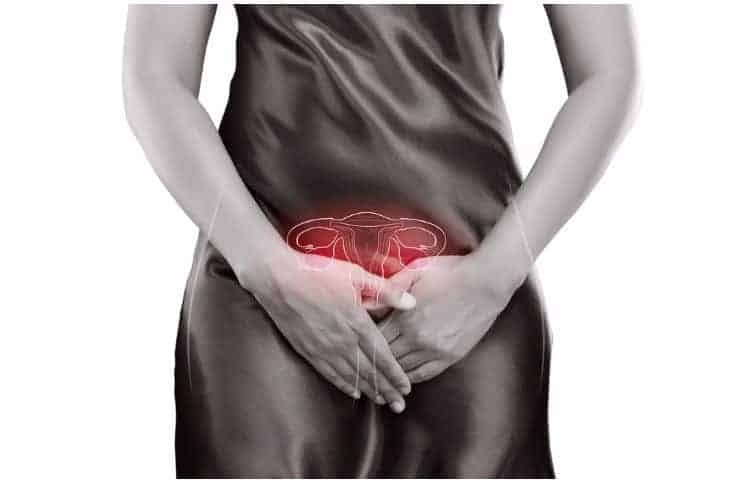Trichomoniasis
Trichomoniasis, also referred as trich, is a common type of vaginal infection. It occurs in both adults and teens.
It affects more African-American women than Hispanic and white women. Also, trich affects about 2 million women ages 14 to 49 in the US.
In addition, babies born to infected mothers have increased chances to have a low birth weight (less than 5.5 pounds), plus, pregnant women with trich are more likely to have a preterm delivery.
Symptoms
Approximately 70 percent of the patients do not have any symptoms. However, when trich does cause signs or symptoms, they may include:
- an urge to urinate frequently;
- a profuse and foul-smelling vaginal discharge — that may be gray, white, green, or yellow;
- burning after ejaculation;
- burning and pain during urination;
- genital redness and itching;
- discharge from the urethra.
Causes
It is caused by a one-celled protozoan which most frequently is sexually transmitted from an infected person. Usually, it is passed between the vagina and penis, and it doesn’t matter if a man ejaculates or not because it can be transmitted through contact.
In some patients, this parasite may start infecting the body after just touching an infected person’s genitals as well as using sex toys that weren’t washed or covered with a new condom prior to use.
In men, this one-celled protozoan causes an infection in the urethra. In women, it causes an infection in the urethra, vagina, or both. Once the infection starts, it can be spread through unprotected genital contact.
Note – this infection is not spread through casual contact, thus, you can’t get it from kissing, sharing drinks or food, holding hands, hugging, sneezing, coughing, or sitting on toilet seats.
Treatment
The Centers for Disease Control and Prevention recommends that any sexually active woman seeking medical treatment for vaginal discharge should be tested for this parasite.
It can be treated and cured with antibiotic medications. The treatment involves a single dose of either Tindamax (tinidazole) or Flagyl (metronidazole). These medicines come in pill form and are taken by mouth. About 90 percent of people with trich are cured with a single course of antibiotics.
Important note – antibiotics cure this sexually transmitted infection, however, it may come back. To prevent reinfection with the organism which causes trich, both partners should be treated correctly.
Unlike gonorrhea and chlamydia, which can lead to infertility if left untreated, this infection trich can’t travel up the reproductive tract and wreck havoc on those organs.
Prevention
Correct usage of latex condoms considerably reduces but does not eliminate the risk of catching this infection.
Moreover, sexual contact with someone who has more than one partner or with more than one partner increases the chance of contracting any sexually transmitted disease.
BV
Bacterial vaginosis is a bacterial infection that develops when the normal environment of the vagina changes.
More than 33 percent of American women have this condition, and the number is higher amongst African-Americans, where up to 50 percent of women can have it.
It is now considered to be an STI, however, the majority of recurrences are not sexually related. Medically, this condition is thought recurrent when a woman gets it 4 times in 12 months.
More importantly, approximately 20 percent of women have bacterial vaginosis at some point during pregnancy. According to research, there is a strong association between bacterial vaginosis and 2nd-trimester miscarriage.
Symptoms
Common symptoms may include:
- burning or painful urination;
- vaginal discharge which may be gray or white in color;
- vaginal itching;
- vaginal odor with a fishy smell especially after sex;
- vaginal discharge with a strong, foul odor.
Causes
It occurs when the healthy balance of vaginal bacteria is disrupted and is being replaced by more bacteria which doesn’t require oxygen to grow.
The leading cause of this condition is Gardnerella vaginalis, a type of tiny coccobacilli spore that can reproduce inside the vagina and change the normal pH balance.
Other factors can affect negatively the pH balance of the vagina, such as:
- douching;
- over-washing;
- taking antibiotics;
- getting your period;
- wearing an intrauterine device (IUD);
- a recent increase in the number of sexual partners;
- decreased estrogen production.
Note – you can’t get this condition from things, such as – sheets and towels, toilet seats, or swimming pools.
Treatment
The standard treatment for bacterial vaginosis is the antibiotic drug metronidazole. This can be used as a gel (Zidoval) or orally as tablets (Flagyl). You will need to take treatment for longer if you keep getting this infection more than twice in 6 months.
There are also some effective home remedies to treat bacterial vaginosis, plus, it occasionally goes away on its own.
Prevention
The best method to prevent it is to be in a long-term monogamous relationship or to refrain from sexual contact of any form.
Avoid douching – there is no need to push soaps or water into the vagina to wash it because douching will disturb the natural balance inside your vagina.
Always clean your sex toys with hot water and soap.
Trichomoniasis vs BV – Differences
Both are considered sexually transmitted infections, however, bacterial vaginosis only affects wimmin (logically). Both can be treated easily with antibiotics and have similar symptoms (in women).
Trich is caused by Trichomonas vaginalis, while bacterial vaginosis is usually caused by Gardnerella vaginalis.
Images credit – Shutterstock
READ THIS NEXT: Magnesium Orotate – Side Effects And Benefits
References https://www.ncbi.nlm.nih.gov/pmc/articles/PMC523559/ https://www.ncbi.nlm.nih.gov/pmc/articles/PMC1047707/ https://www.nichd.nih.gov/health/topics/bacterialvag/clinicaltrials/Pages/ http://sti.bmj.com/content/80/1/8
